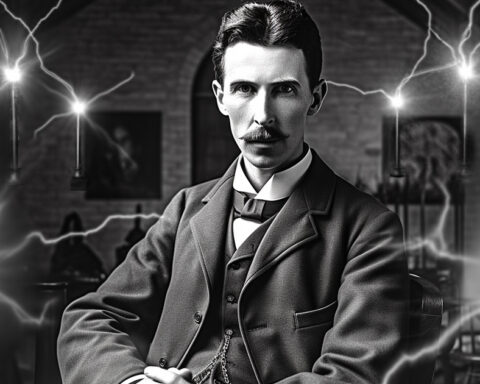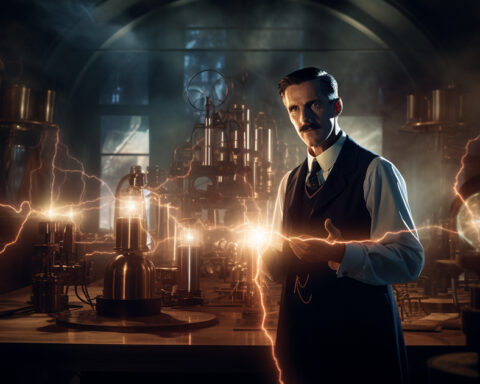Introduction
One of the greatest electrical engineers and inventors in history, Nikola Tesla made revolutionary advances in science and technology that changed the world forever. The Wardenclyffe Tower stands out among his many ambitious endeavors as a representation of his constant pursuit of innovation and his forward-thinking theories on wireless power transmission. This article delves into Tesla’s Wardenclyffe Tower’s intriguing history, examining its design, function, difficulties faced during construction, the idea of wireless power transfer, and the project’s final demise.
Tesla’s Vision and Nikola
Early years and accomplishments

Nikola Tesla was born in Croatia in 1856, and even as a young child, he showed a great ability for engineering. His travels brought him to the United States, where he would later use his amazing inventions to transform the world. The invention of the induction motor and the Tesla coil, among other contributions made by Tesla to alternating current (AC) power systems, set the groundwork for contemporary electrical distribution and revolutionized society.
Tesla’s Hope for Wireless Energy
Tesla’s innovations in AC power systems were already astounding, but his creative mind was always looking for uncharted territory. He envisioned a world in which energy could be transferred wirelessly, doing away with the need for large power grids and allowing wireless communication across great distances. His enormous Wardenclyffe Tower project was launched as a result of this concept.
Tower at Wardenclyffe
Design and Objective
Tesla’s idea for a wireless power transmission station was the Wardenclyffe Tower, which is situated near Shoreham, Long Island. It had a distinctive dome structure at the top and was intended to be over 180 feet tall. Tesla envisioned a network of connected power stations that would transform the way we harness and distribute electricity, and he intended for the tower to transport electricity wirelessly throughout the world.
Construction difficulties
Numerous technical and financial difficulties were encountered during the construction of the Wardenclyffe Tower. The sheer size and innovative nature of Tesla’s ambitious project challenged his resolve and taxed his resources, and he struggled to find sufficient finance. Despite the difficulties, Tesla persisted in the pursuit of his impossible dream.
Transmission of Power Wirelessly
Concepts and innovations from Tesla

Tesla’s Wardenclyffe Tower project revolved around wireless power transfer. In order to carry electricity without using conventional lines, he imagined using the Earth itself as a conductor and making use of its resonant capabilities. Resonant inductive coupling, which Tesla invented, facilitated the effective transmission of electrical energy across considerable distances. His breakthroughs in wireless power transfer established the groundwork for subsequent advances in the area.
Potential Advantages
Tesla saw tremendous promise in the wireless power transfer idea. It offers the chance to improve communication infrastructure, lessen global dependency on fossil fuels, and bring energy to previously inaccessible distant locations. The realization of Tesla’s idea may have revolutionized the world’s energy system and brought about a new age of technological development.
The role of J.P. Morgan in financing
Obstacles and Collaboration
Tesla had some brilliant ideas, but it was extremely difficult for him to secure enough finance for the Wardenclyffe Tower project. He established cooperation with renowned investor J.P. Morgan, who at first endorsed Tesla’s idea and saw its potential. However, as the project moved forward, budgetary limitations and divergent views on its economic feasibility damaged their working relationship and presented new challenges.
Project Abandonment
The Wardenclyffe Tower project finally failed as a result of rising financial issues and unforeseeable setbacks. The project was abandoned because of a lack of long-term finance and the project’s high ambitions. Tesla’s ambition of large-scale wireless power transmission came to an end when the land was sold and the tower itself was demolished.
Impact and Legacies
Having an impact on future technology
The Wardenclyffe Tower project’s impact continues to affect contemporary technology even if its stated aims were not met. Tesla created the groundwork for later developments in wireless power transfer with his ideas and inventions. Future scientists and innovators were motivated by his work, which led to advancements in fields including wireless communication, renewable energy, and the creation of wireless charging methods.
Rediscovery and Recognition
The Wardenclyffe Tower project and Tesla’s accomplishments have seen a rise in attention recently. A renewed interest in reexamining Tesla’s theories on wireless power transmission has been inspired by efforts to preserve his legacy and the acknowledgment of his enormous contributions to science and engineering. Tesla’s ideas are still being investigated and expanded upon by scientists and engineers, advancing the advancement of wireless energy transmission technologies and preserving the visionary spirit of the inventor.
Conclusion
Tesla’s Wardenclyffe Tower is a symbol of the boldness of human ingenuity and the unrelenting quest for invention. Although the project’s primary objective of wireless power transmission was not met, it is nonetheless regarded as a legendary representation of Tesla’s vision and his unwavering commitment to pushing the limits of science. Generations of scientists, engineers, and innovators have been inspired by Tesla’s genius, which serves as a reminder of the revolutionary potential of creative thought.






